Хаас за Великобритания
Ромен Грожан:
The Hungarian Grand Prix proved to be the highlight, in terms of the overall performance of the VF-20, from the opening three races of the 2020 campaign. What made the difference there?
I think we understood the car a little bit more, we tried to put it in a better place. I guess the layout of the circuit worked a tiny bit better for the car, so we were a bit more on the pace – matching the pace of others, which was good.
Do you adjust your mindset for qualifying knowing it’s an area that so-far hasn’t been an area of strength for the VF-20? Do you feel Q2 should be achievable for both cars on Saturday afternoons?
I think Q2 for both cars is our next target. I don’t know if that’s achievable in the next few races, but it’s definitely where we’re aiming to go. We’ll work as hard as we can and obviously try to get there without affecting our race pace.
It feels like we’ve had a bit of everything across the first three race weekends - notably the one thing that has been consistent is the inconsistency – from variable weather session-to-session, reliability issues, qualifying performance versus race performance etc. Has it been hard to get a true feeling on where things stack up? And now that you’ve had time to reflect a little, what are you hoping for in terms of how the team develops the VF-20?
I think now this year we start to have an idea as to what the VF-20’s like. We’re now fighting with Alfa Romeo and Williams just a little bit behind the midfield, so we just have to try to get the car in an even sweeter spot. I think we’ve done a good job, but we’re going to keep pushing and see what comes to us and see what we can improve.
What are the ingredients for a successful weekend setting up a car for Silverstone with its long, fast corners and how much of a role does experience play in working through that set-up plan?
First of all, with Silverstone you need to see what the weather’s going to be like. It’s Great Britain, you can have a lot of surprises, but that’s the first thing to check. Silverstone completely switches from being a fast circuit to a low speed circuit. Most of the high-speed corners are now either flat out or near flat out, the time you can gain is made into turns three, four, six and seven, and the last chicane – those are the low-speed corners. That’s where you want to be performing very well in a modern car.
What are your favorite Silverstone moments, either from your junior career or from competing in the British Grand Prix throughout your Formula One career?
I’ve had some good moments at Silverstone, some great wins. The 2012 British Grand Prix was quite good fun. I had contact on the first lap, it took my front wing out, so I was forced to pit. I came back from being last on the first lap to finishing sixth at the checkered flag. I remember overtaking Jenson Button in the McLaren on the outside of Copse, then Lewis Hamilton through Maggots and Becketts, I was just flying through the field having a lot of fun. That was definitely a good one.
Кевин Магнусен: The Hungarian Grand Prix proved to be the highlight, in terms of the overall performance of the VF-20, from the opening three races of the 2020 campaign. What made the difference there?
I think we’ve learned a huge amount about the VF-20 in the first three races. It’s been good to get to know the car a bit more and I believe we’ve been successful in making progress in the direction we’ve tried to go with this year’s car in comparison to the VF-19. The car is much more drivable in the race, it’s very usable, but we still need to find more qualifying pace – and we’re working on that.
You stated after the race in Hungary that the car was very drivable, and you had the ability to keep pushing throughout the Grand Prix. Can you describe how that feels in the car and the confidence it gives you as a driver?
As I said, the car is just very usable, drivable, it’s consistent through the corners, as well as through a stint on a set of tires. Last year’s car, for example, you couldn’t push for very long, then you lost grip in the tires. The VF-20 seems to keep the tires in the working window for the whole stint – much better than last year’s car. I’d say that’s really the main difference. The characteristics of the car on a single lap is also better, but obviously we need more overall performance to be able to get more out of it in qualifying and the race. The baseline of the car is really good though.
Do you adjust your mindset for qualifying knowing it’s an area that so-far hasn’t been an area of strength for the VF-20? Do you feel Q2 should be achievable for both cars on Saturday afternoons?
I don’t feel currently that we are strong enough for any more than sneaking into Q2 in qualifying. We’re much stronger in the race, as I’ve said, but we just have to do the best we can in qualifying to get us as far up as we can so we can fight in the race. We certainly need to focus on qualifying from here.
What are the ingredients for a successful weekend setting up a car for Silverstone with its long, fast corners and how much of a role does experience play in working through that set-up plan?
I would say the ingredient for a good weekend at Silverstone is lots of downforce, although you still have some pretty decent straights – so you do need straight line speed as well. I don’t think we’ll change our approach very much; I think we’ll just try and get our car into the window. We’ll use free practice for trying to get the car set-up right and get ourselves ready for qualifying and the race.
What are your favorite Silverstone moments, either from your junior career or from competing in the British Grand Prix throughout your Formula One career?
I’ve had many races at Silverstone. I’ve raced at the old track, the new track, and in many different race cars. I’ve won races there in the past in F3 and had pole position in Formula Renault 3.5. I’ve never really had the perfect Grand Prix there in Formula One - yet.
Гюнтер Щайнер: The Hungarian Grand Prix proved to be the highlight, in terms of the overall performance of the VF-20, from the opening three races of the 2020 campaign. What made the difference there?
The Hungarian circuit was a little less power sensitive, therefore in the race we had a fair showing – a decent race pace. Qualifying was not to our liking to be honest; the advantage of the other cars is just too high. Like always though, we try to do our best each session.
While the call to pit both drivers on the formation lap in Hungary ultimately netted a pair of 10-second penalties post-race, is it a decision you stick behind given how the actual race played out?
For sure we would do the same thing again. The 10 second penalty was a little bit ambiguous. Unfortunately, we cannot appeal it because it’s a time penalty – you’re not allowed to appeal those ones. It was never done before, and it looks like if it’s never been done before – and there’s no clear regulation, you get a penalty. We need to move on from this, but for sure it spiced the race up for everybody. I don’t think we should stop doing these things in racing, otherwise accountants can race in Formula One.
Do you adjust the team’s approach moving forward for qualifying knowing that so-far it hasn’t been an area of strength for the VF-20? Do you feel Q2 should be achievable for both cars on Saturday afternoons?
I obviously feel we should get in there but unfortunately we don’t. We’re just lacking the speed in qualifying and that’s something we have to live with as we’re not planning any big upgrades and there are no engine upgrades. We just need to fight and always try to do a good job, then we can hope we move on.
It feels like we’ve had a bit of everything across the first three race weekends - notably the one thing that has been consistent is the inconsistency – from variable weather session-to-session, reliability issues, qualifying performance versus race performance etc. Has it been hard to get a true feeling on where things stack up? And now that you’ve had time to reflect a little, what are you hoping for in terms of how the team develops the VF-20?
Yes, we’ve had a lot of inconsistency, but I think we know pretty well where we’re at. We’re not the fastest midfield car this year and we just need to deal with that one. We’re always trying to get the best out of the package. We’ve not planned any development for this year, so we have to focus on getting the best out of what we’ve got this season and look to next year to try to do something better for that season. It will not be an easy year but we’re here to stay.
What are the ingredients for a successful weekend setting up a car for Silverstone with its long, fast corners and how much of a role does experience, both driver and team, play in working through that set-up plan?
Silverstone is a very challenging track for the drivers – they can obviously help a lot, like any other track, to be fast. Silverstone, with the high-speed corners, it’s for sure a challenge for the drivers, but also for the team. Normally our car was pretty good on high-speed corners, this year I think it’s a little bit different. We’re just not fast enough on the corners. We just have to try to find the balance between medium-speed downforce and not losing out too much on the high-speed parts of the track.


















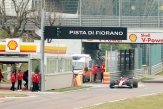
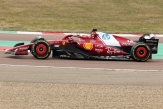
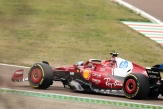
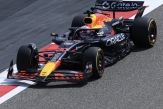
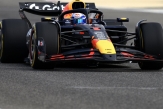
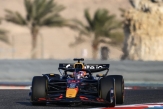

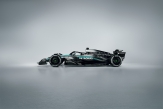
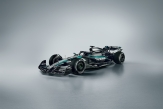
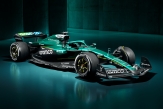
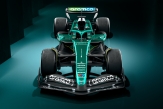
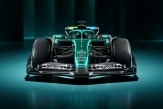
.jpg)
.jpg)
.jpg)

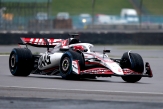

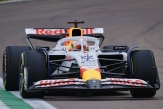
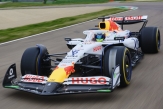
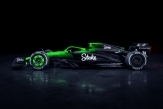


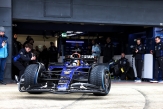
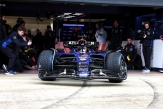
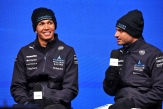

02/12/2025 от Огнян Тенчев (drJeckyll), няма коментари